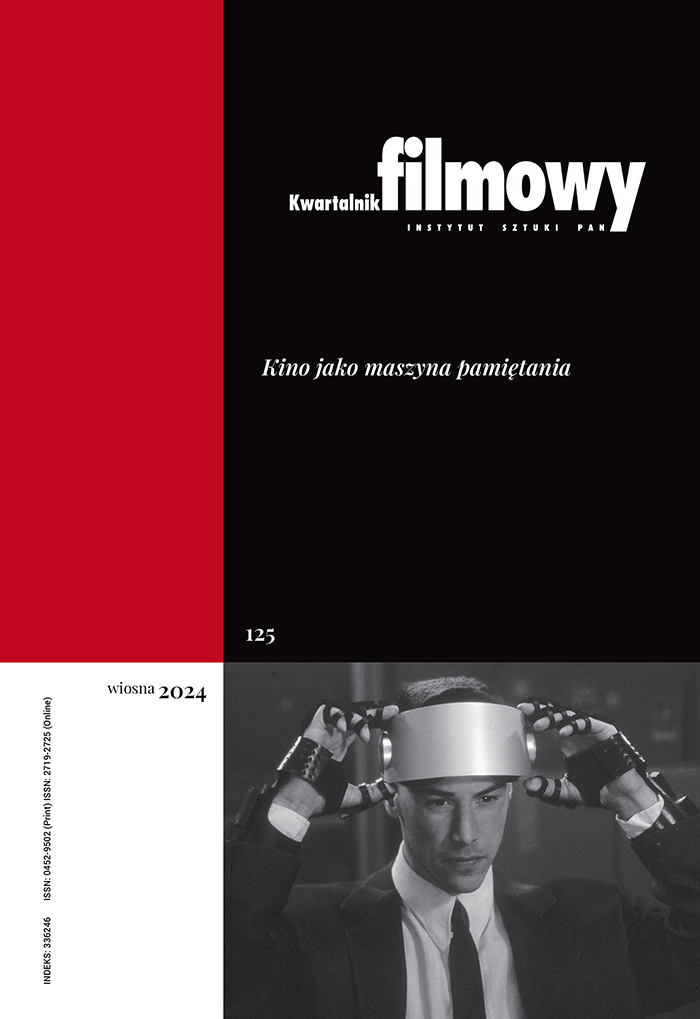Towards Transnational Sensitivity?: Strategies of Cultural Opening and Assimilation of Genres in Icelandic Cinema After the Year 2000
Abstract
During the beginning of the 21st century film directors trained overseas brought in a new quality to the Icelandic cinema. The films made at that time represent the values and topics different from those explored in the 1980s cinema, which were primarily focused on the local perspective. A new generation of filmmakers presents the image of Iceland as a country that is opening up to outside influences and that is subjected to the processes of globalization. The main topics are, among others: the debate on the increasing role of women in the political and cultural life, problems with the assimilation of immigrants and the intolerance towards sexual minorities. With a change of subject matter come different ways (modeled on European and American ones) of talking about the cultural opening up of Iceland, such as criticism of the nationalist rhetoric of earlier cultural texts. Changing worldviews combine with a changed attitude to the production and distribution of films. The makers of new Icelandic film focus on search for foreign partners that can help them in financing their original work. They are also happy with the role of “world citizens” who are looking for inspiration and the ability to create films outside of their home country.
Keywords:
Icelandic cinema, multiculturalism, emigrantsReferences
Cowie, Peter. 2000. Icelandic Films 1980-2000. Kvikmyndasjóður Íslands: Reykjavík.
Google Scholar
Higson, Andrew. 1995. Waving the Flag: Constructing a National Cinema in Britain. University of Oxford Press: Oxford.
DOI: https://doi.org/10.1093/oso/9780198123699.001.0001
Google Scholar
MacCannell, Dean. 1993. Democracy Turn: On Homeless Noir. W: J. Copjec (red.). Shades of Noir: A Reader. Verso: London / New York.
Google Scholar
Nestingen, Andrew. 2008. Crime and Fantasy in Scandinavia - Fiction, Film and Social Change. University of Washington Press: Seattle.
Google Scholar
Norðfjörð, Björn. 2010. Dagur’s Kari’s ‘Noi Albinoi’, Seattle / Coppenhagen: University of Washington Press.
Google Scholar
Norðfjörð, Björn. Icelandic Cinema: A National Practice in a Global Context. University of Iowa: PhD dissertation.
Google Scholar
Authors
Sebastian Jakub Konefałkwartalnik.filmowy@ispan.pl
University of Gdańsk Poland
Pracownik Katedry Kulturoznawstwa Uniwersytetu Gdańskiego. Stypendysta Fundacji Rozwoju Systemu Edukacji. Publikował m.in. w „Kinie”, „Kwartalniku Filmowym”, „Panoptikum”, „Studiach Humanistycznych”, Światowej encyklopedii filmu religijnego (2007). Współautor leksykonu Kino Nowej Przygody (2012) i World Film Locations: Reykjavik (2012). Obecnie zajmuje się badaniem kinematografii islandzkiej.
Statistics
Abstract views: 350PDF downloads: 130
License
Copyright (c) 2012 Sebastian Jakub Konefał

This work is licensed under a Creative Commons Attribution 4.0 International License.
The author grants the publisher a royalty-free non-exclusive licence (CC BY 4.0) to use the article in Kwartalnik Filmowy, retains full copyright, and agrees to identify the work as first having been published in Kwartalnik Filmowy should it be published or used again (download licence agreement). The journal is published under the CC BY 4.0 licence. By submitting an article, the author agrees to make it available under this licence.
In issues from 105-106 (2019) to 119 (2022) all articles were published under the CC BY-NC-ND 4.0 licence. During this period the authors granted a royalty-free non-exclusive licence (CC BY-ND 4.0) to use their article in „Kwartalnik Filmowy”, retained full copyright, and agreed to identify the work as first having been published in our journal should it be published or used again.
Most read articles by the same author(s)
- Sebastian Jakub Konefał, Piotr Szulkin: The Catastrophes of Logos and the Absurdities of Existence , Kwartalnik Filmowy: No. 104 (2018): Essay, Found Footage, Compilation Film
- Sebastian Jakub Konefał, Smartphone Stories: Author’s Strategies in the Films of Ruben Östlund , Kwartalnik Filmowy: No. 101-102 (2018): European Cinema of 21st Century
- Sebastian Jakub Konefał, Body and Fear: Physiology of Death in Zombie Horror and the Audiovisual Culture , Kwartalnik Filmowy: No. 61 (2008): Fear, Anxieties, Concerns











